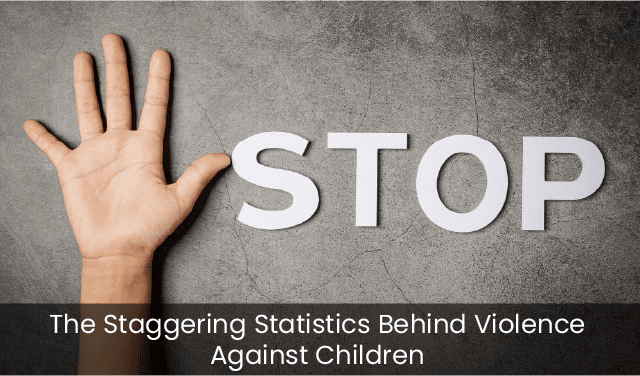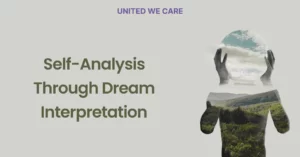Introduction
Experiencing violence during childhood affects an individual for the rest of their life. The current global unrest has only contributed to this evil, providing an environment that triggers acts of violence against individuals below 18 years. It could range from physical to emotional and even sexual violence, while those responsible could be anyone, from peers, siblings, parents, and caregivers to strangers.
The figures behind violence against children
-
The World Health Organisation (WHO)[3] estimates close to 1 billion children between the ages of 2 to 17 years (roughly half of the world’s population of children) face physical, sexual, or emotional violence in a year.[1]
-
Almost 75% of children between 2 to 4 years fall victim to regular physical or emotional abuse.
-
About 12% of children experienced physical violence in the past year, and about 1/4th of teenagers face bullying monthly.
-
One in four adults has been a victim of violence as a child.
-
About 20% of all women and close to 8% of men have reportedly been abused sexually before turning 18.
-
While mostly these children experience more than one form of violence, girls, especially adolescents, are more at risk of facing sexual violence as the figures suggest that 120 million girls and young adult women below 20 years have been victims of sexual contact without consent.
How can we explain the recent rise of violence against children?
A recent report by Unicef indicates that the world has seen a 15% increase in the number of children living in poverty, thus bringing the total figure to 1.2 billion since 2020[2]. It coincides with the Covid-19 pandemic hitting the world. The mass-scale layoffs resulting in economic slowdowns have contributed to several families plunging deep into debt and poverty, disturbing family dynamics and distressed parents. It eventually contributes to incidences of violence against children.Another possible reason is the growth of social media, especially during the lockdowns when people had to stay in their homes. Online abuse has grown since children spent much time online, mostly unsupervised, and fell prey to cyberbullying and sexual abuse[4]. The pandemic has had a massive impact on girls. Much experienced sexual violence while in confinement; even regressive practices like child marriage saw a spike due to economic crisis and poverty.Many nations saw their law and order system crumble due to the pandemic, have suffered economic crises due to wars, and have received limited financial aid, thus allowing practices such as child trafficking to thrive. Even necessities such as food, water, and clothing have been challenging for refugee camp people who had to sell their children in exchange for these items.
How to prevent violence against children before it starts
Some steps to avoid violence against children [5] involve identifying, monitoring, and intervening at the appropriate time in the case of caregivers who:
-
Have a history of alcohol or drug consumption
-
Have an account of psychiatric issues or mental health-related conditions
-
Have anger issues
-
Have been abused as a child
-
Are you experiencing mental stress
-
Are not the biological parents
-
Justify violence to keep children disciplined.
Additionally, in the community, we can do the same for families that:
-
Are isolated
-
Have a history of facing violence
-
Have frequent conflicts and arguments
-
Have contests with the law
-
Have several uneducated and unemployed members
-
Have broken or abusive marriages
-
Have people with alcohol or drug consumption issues.
Ways to bring down violence against children
Timely intervention upon seeing red flags could be the most effective way to reduce violence against children.
-
Parents/ caregivers can participate in sessions teaching skills related to parenting. Additionally, identifying the problem behaviour and its cause to address it, providing economic support to the families, and promoting work policies that allow for a work-life balance will help.
-
It is important to take action on Legislation discouraging and penalizing violence against children.
-
Along similar lines, laying down school functioning rules to avoid such instances will also help.
Children are the future; let’s protect them!
Violence against children is a violation of their fundamental rights.
-
Children are our future, and child abuse impacts our present and future in the form of these children.
-
We lose many children yearly because of abuse and neglect; those more vulnerable are affected even more and fail to realize their true potential when they reach adulthood.
-
Many of them face challenges as they grow up in the form of delays in achieving developmental milestones and falling prey to mental, physical, and personality issues due to traumatic experiences. When they become adults, these children may behave differently against their children. It will not be a surprise if these children fail to contribute to the community and add to society’s burden.
Conclusion
Violence against children has to come to an end. Failure to do so might bring about a world where nobody is secure, and the world is full of individuals who doubt themselves and take more from society than they contribute. Preventing violence against children becomes even more imperative because other factors contribute to child abuse, such as climate change, poverty, and lack of resources, making children more vulnerable. Governments must dedicate efforts and resources towards building infrastructure, passing legislation involving child protection, and, most importantly, collaborating worldwide to create an environment that allows children to grow and blossom to their fullest potential.
References
-
Global Prevalence of Past-year Violence Against Children: A Systematic Review and Minimum Estimates. Hills S et al. Pediatrics (2016) 137 (3): https://doi.org/10.1542/peds.2015-4079
-
Children as Victims of Violence: A National Survey. David F et al. Pediatrics (1994) 94 (4): 413–420. https://doi.org/10.1542/peds.94.4.413
-
https://www.who.int/en/news-room/fact-sheets/detail/child-maltreatment
-
https://www.who.int/health-topics/violence-against-children#tab=tab_3
-
https://www.cdc.gov/violenceprevention/childabuseandneglect/vacs/fastfact.html
-
A Short Textbook of Psychiatry by Neeraj Ahuja










